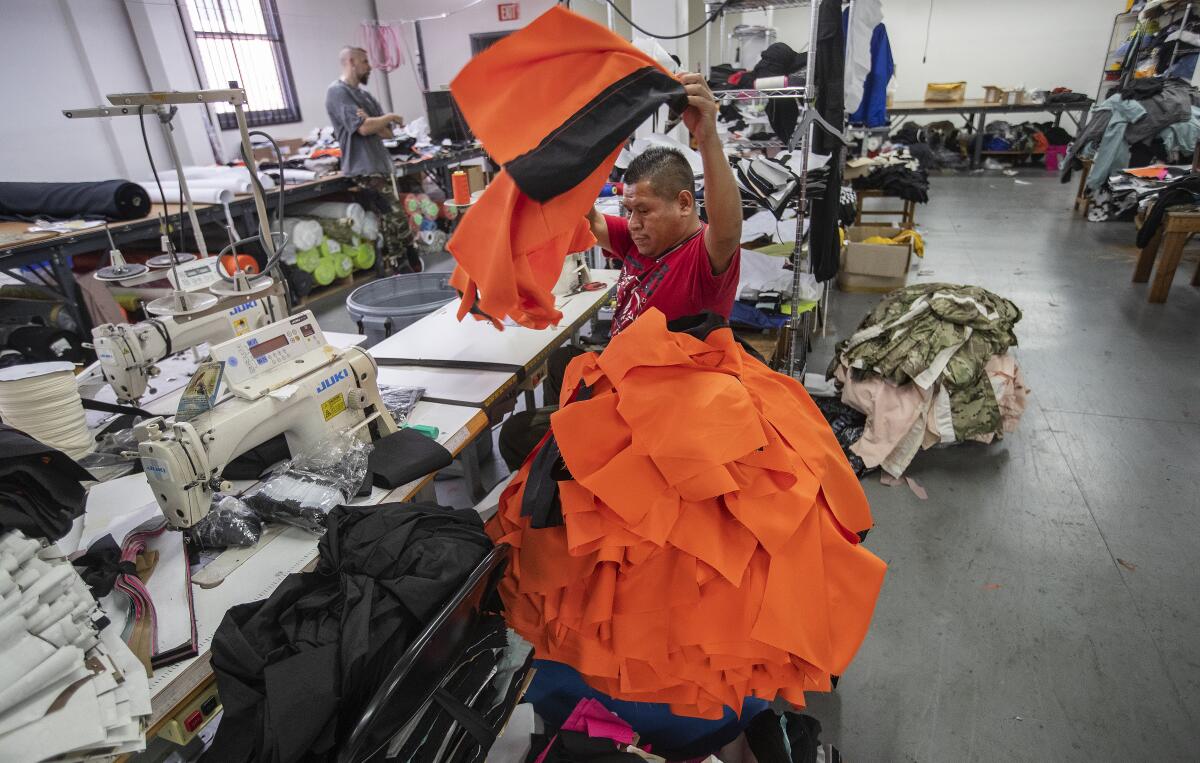U.S. manufacturing expands at slowest pace in two years

- Share via
U.S. manufacturing activity continued to cool in July as more factories dialed back production in the face of shrinking orders and rising inventories.
The Institute for Supply Management’s gauge of factory activity eased to 52.8, the lowest level since June 2020, from 53 a month earlier, according to data released Monday. Readings above 50 indicate expansion, and the latest figure compared with a median projection of 52 in a Bloomberg survey of economists.
The group’s measure of production also fell to a more than two-year low, and its gauge of new orders remained in contraction territory for a second month. The figures highlight softer demand for merchandise as the economy struggles for momentum.
“Panelists are now expressing concern about a softening in the economy, as new order rates contracted for the second month amid developing anxiety about excess inventory in the supply chain,” said Timothy Fiore, chair of ISM’s Manufacturing Business Survey Committee.
The ISM factory inventories index rose to 57.3, the highest since 1984 and suggesting stockpiles are mounting at more manufacturers. Although many producers have been adding to inventories in the event of further supply chain disruptions, the increase may also suggest some of the build is unintended.
Separate data from S&P Global on Monday showed a build-up in finished goods inventories for the first time since October 2020. That group’s final July overall factory purchasing managers index slipped to 52.2, a two-year low.
A shrinking GDP doesn’t automatically equal an economy in recession. Here’s why economists are so hesitant to put a label on this topsy-turvy economy.
The ISM overall index is down almost 11 points from its multi-decade peak in March 2021, when producers were scrambling to meet pent-up demand as the economy emerged from pandemic lockdowns. Spending on merchandise has since slowed as consumption patterns started shifting from goods to services.
Eleven manufacturing industries reported growth in July, led by apparel, minerals and petroleum, and coal products. Seven industries reported a contraction, led by wood products, furniture and paper.
The ISM and S&P Global manufacturing data are consistent with a general slowdown in other parts of the world. European factory activity slumped last month, and manufacturing output in Asia continued to weaken.
Purchasing managers’ indexes for the euro area’s four largest members all indicated contraction, with shrinking confirmed for the region as a whole after an initial estimate July 22. In Asia, China, South Korea and Taiwan took the biggest hit.
The July measure of prices paid for materials used in the production process — extremely elevated during much of the last year and a half amid supply and demand imbalances — plunged 18.5 points to the lowest level in almost two years.
That marked the largest drop since 2010 and reflected declines in crude oil and metals prices. Almost 22% of respondents reported paying lower prices in July, up from 8.3% a month earlier, the report showed.
Supplier delivery times lengthened, the purchasing managers data showed, yet at the slowest pace since before the pandemic. That, combined with declining orders, probably enabled companies to make progress on unfilled orders. The ISM’s measure of backlogs fell to the lowest since June 2020.
Bloomberg writer Chris Middleton contributed to this report.
More to Read
Inside the business of entertainment
The Wide Shot brings you news, analysis and insights on everything from streaming wars to production — and what it all means for the future.
You may occasionally receive promotional content from the Los Angeles Times.










